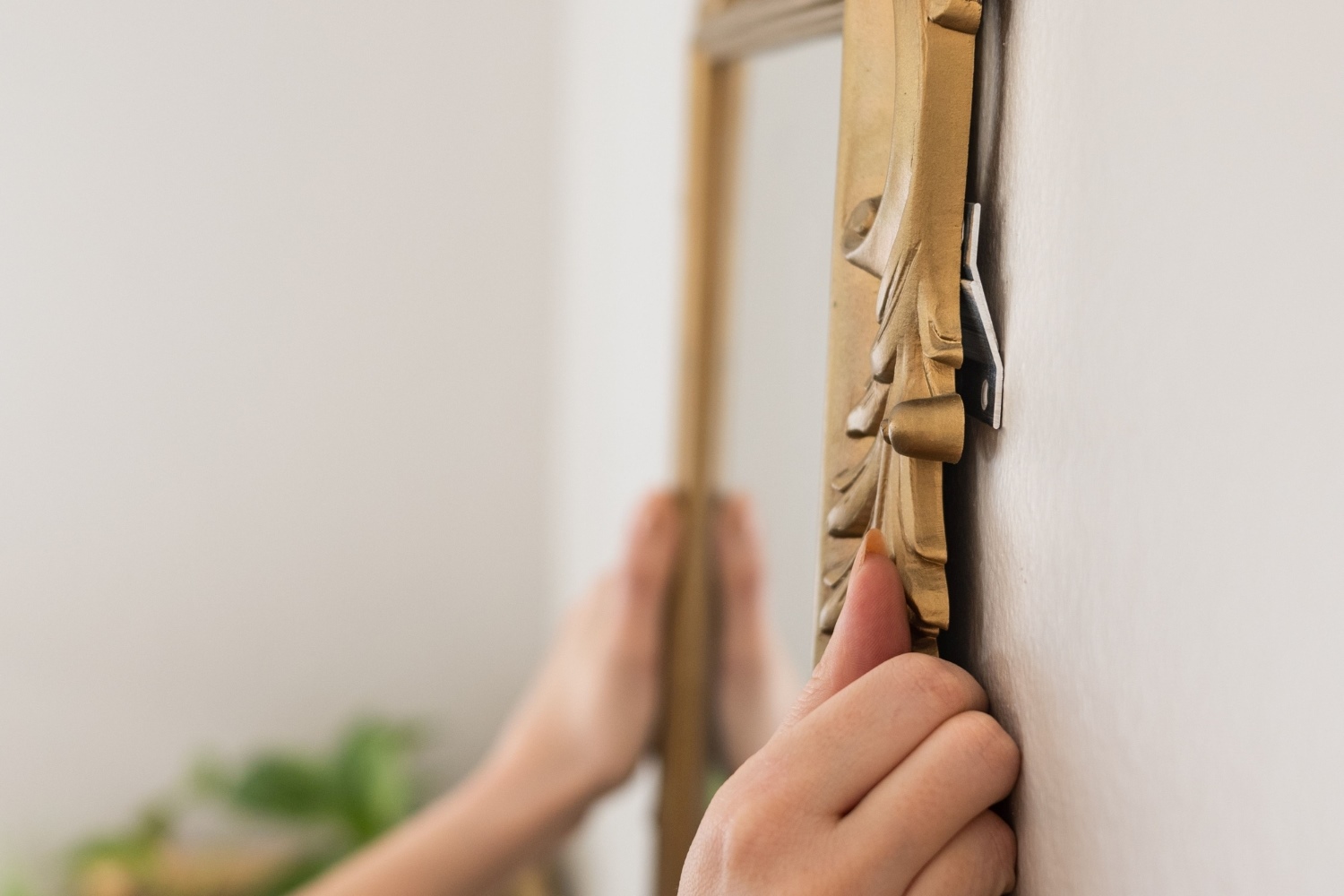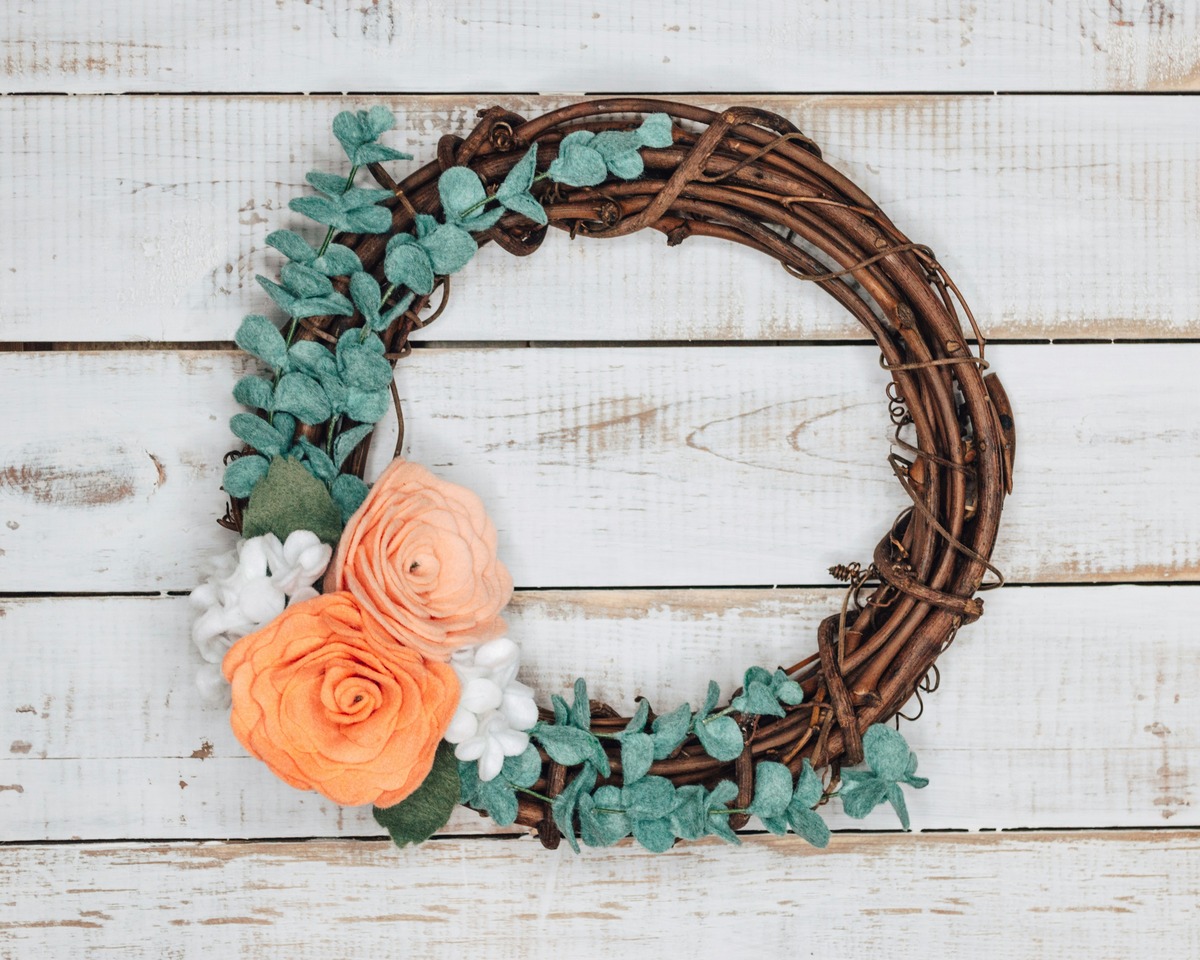Home>Home and Garden>How To Hang Heavy Pictures


Home and Garden
How To Hang Heavy Pictures
Published: March 4, 2024
Learn how to securely hang heavy pictures in your home with our expert tips and techniques. Create a stunning display while keeping your walls and artwork safe. Perfect for home and garden enthusiasts.
(Many of the links in this article redirect to a specific reviewed product. Your purchase of these products through affiliate links helps to generate commission for Noodls.com, at no extra cost. Learn more)
Table of Contents
Introduction
Hanging heavy pictures can be a daunting task, especially if you're concerned about damaging your walls or the safety of the artwork. However, with the right knowledge and tools, you can confidently display your favorite pieces without worry. In this comprehensive guide, we will explore the essential steps to successfully hang heavy pictures, ensuring both aesthetic appeal and structural integrity.
Whether you're a seasoned art collector or simply looking to adorn your living space with a striking focal point, understanding the nuances of hanging heavy pictures is crucial. From assessing the weight and size of the picture to selecting the appropriate hanging hardware and finding the optimal location on the wall, each step plays a pivotal role in achieving a secure and visually pleasing display.
By delving into the intricacies of this process, you'll gain the confidence to tackle this task with ease. Moreover, the satisfaction of seeing your cherished artwork adorning your walls will undoubtedly add a personal touch to your living space, creating an inviting and captivating atmosphere for both residents and guests alike.
So, let's embark on this journey together, as we unravel the art of hanging heavy pictures, empowering you to showcase your prized possessions with finesse and assurance.
Assessing the Weight and Size of the Picture
Before embarking on the process of hanging a heavy picture, it is crucial to assess both its weight and size. This initial step lays the foundation for determining the appropriate hanging hardware and ensuring the structural integrity of the display.
Firstly, it is essential to accurately measure the weight of the picture. This can be achieved using a reliable scale capable of accommodating the picture's dimensions. By obtaining the precise weight, you can ascertain the load-bearing capacity required for the hanging hardware and the wall itself. This step is vital in preventing potential damage to the wall and ensuring the safety of the artwork.
Additionally, evaluating the size of the picture is equally important. Larger and heavier pictures necessitate sturdier hanging hardware and may require multiple attachment points to distribute the weight evenly. Conversely, smaller pictures may be adequately supported by a single hook or bracket. Understanding the dimensions of the picture enables you to make informed decisions regarding the type and quantity of hanging hardware needed for a secure and balanced display.
Furthermore, consider the composition of the picture. If it features a delicate frame or intricate embellishments, extra care should be taken to select hanging hardware that complements and supports these features without causing damage.
By meticulously assessing the weight, size, and composition of the picture, you lay the groundwork for a successful and visually pleasing display. This proactive approach not only ensures the safety of the artwork but also streamlines the subsequent steps of choosing the right hanging hardware and finding the optimal location on the wall.
With a clear understanding of the picture's weight and size, you are now equipped to proceed to the next crucial phase of the hanging process: choosing the right hanging hardware.
Choosing the Right Hanging Hardware
Selecting the appropriate hanging hardware is a pivotal step in ensuring the secure and stable display of heavy pictures. The right hardware not only supports the weight of the picture but also minimizes the risk of damage to the wall. When choosing hanging hardware, several factors should be considered to guarantee a reliable and aesthetically pleasing installation.
One of the most common and versatile options for hanging heavy pictures is a sturdy picture hook. These hooks are available in various sizes and weight capacities, accommodating a wide range of picture dimensions. When selecting a picture hook, it is imperative to choose one with a weight capacity that exceeds the actual weight of the picture. This provides an added layer of security and prevents the risk of the hook becoming compromised over time.
Alternatively, for exceptionally heavy pictures, a wall anchor and screw combination may be more suitable. Wall anchors are designed to distribute the weight of the picture across a larger area of the wall, reducing the strain on a single point of attachment. Paired with a robust screw, this hardware offers exceptional support for heavier pictures and is particularly beneficial for drywall installations.
Another consideration when choosing hanging hardware is the aesthetic impact on the display. While the primary function of the hardware is to support the picture, it should also complement the overall presentation. For instance, decorative hooks or hangers can add a touch of elegance to the display, seamlessly blending functionality with visual appeal.
Moreover, the material of the hanging hardware should align with the composition of the picture and its frame. For instance, brass or stainless steel hardware may be preferred for pictures with metallic frames, while wooden frames may benefit from matching hardware to create a cohesive and harmonious aesthetic.
In addition to the primary hanging hardware, supplementary accessories such as wall bumpers or spacers can further enhance the display. Wall bumpers provide a cushioning effect between the picture and the wall, preventing slippage and minimizing potential wall damage. Similarly, spacers can be utilized to ensure the picture hangs level and parallel to the wall, adding a professional touch to the installation.
By carefully considering the weight capacity, functionality, aesthetics, and supplementary accessories, you can confidently select the right hanging hardware for your heavy picture. This thoughtful approach not only ensures the safety and stability of the display but also contributes to a visually striking and well-executed presentation.
With the appropriate hanging hardware chosen, the next step involves finding the optimal location on the wall to showcase your picture securely and attractively.
Finding the Right Location on the Wall
Determining the ideal location on the wall to hang a heavy picture is a crucial aspect of the installation process. The placement not only influences the visual impact of the artwork but also plays a significant role in ensuring the structural integrity of the display. By carefully considering various factors, you can identify the optimal position for showcasing your picture securely and attractively.
First and foremost, take into account the viewing height. The center of the picture should ideally align with the average eye level of individuals in the space where it will be displayed. This ensures that the artwork is easily visible and creates a harmonious visual balance within the room. For most spaces, a height of approximately 57 to 60 inches from the floor to the center of the picture is recommended. However, adjustments can be made based on the specific layout and furniture arrangement of the room.
Moreover, consider the surrounding elements within the room. Take note of nearby furniture, architectural features, and existing decor. The picture should harmonize with its surroundings and serve as a focal point without overwhelming or appearing disconnected from the overall aesthetic. Additionally, ensure that the chosen location allows for sufficient space around the picture, preventing it from feeling cramped or overshadowed by other elements in the room.
Another vital consideration is the wall composition. For heavy pictures, it is advisable to anchor the hanging hardware into a wall stud for maximum support. Using a stud finder, locate the position of the studs and mark them for reference. If the studs are not conveniently positioned for the desired location of the picture, alternative methods such as using wall anchors or specialty hanging systems may be employed to ensure a secure attachment.
Furthermore, assess the lighting in the chosen location. Natural and artificial lighting can significantly impact the visual presentation of the picture. Avoid positioning the picture in direct sunlight, as prolonged exposure can lead to fading and deterioration of the artwork. Similarly, excessive glare from indoor lighting sources should be taken into account to prevent visual distractions and ensure optimal viewing conditions.
By carefully evaluating the viewing height, room layout, wall composition, and lighting, you can pinpoint the perfect location on the wall to showcase your heavy picture. This thoughtful approach not only enhances the visual appeal of the artwork but also guarantees a secure and well-integrated display within your living space. With the optimal location identified, you are now ready to proceed with the final step of hanging the picture, bringing your vision to fruition with confidence and precision.
Hanging the Picture
With the weight and size of the picture assessed and the appropriate hanging hardware selected, the final step involves the meticulous process of hanging the picture. This pivotal phase requires precision and attention to detail to ensure a secure and visually appealing display.
Begin by gathering the necessary tools, including a measuring tape, level, pencil, and a power drill or screwdriver, depending on the chosen hanging hardware. With these tools at hand, you can proceed to the chosen location on the wall, where the picture will be showcased.
Using the measurements obtained during the assessment phase, mark the precise position for the hanging hardware on the wall. If anchoring into a wall stud, ensure the markings align with the stud's location for optimal support. For wall anchors, follow the manufacturer's guidelines for proper spacing and placement.
Next, carefully install the chosen hanging hardware, ensuring it is securely fastened to the wall. Utilize a level to confirm that the hardware is positioned evenly and parallel to the ground, preventing the picture from appearing crooked once hung.
With the hanging hardware in place, it's time to prepare the picture for installation. If the picture features a wire or sawtooth hanger, carefully position it on the hanging hardware, ensuring a snug and secure fit. For pictures with D-rings or keyhole slots, align them with the corresponding hooks or brackets on the hanging hardware.
Once the picture is securely attached to the hanging hardware, take a moment to admire the alignment and stability of the display. Use the level to confirm that the picture hangs perfectly straight, making any necessary adjustments to achieve an aesthetically pleasing presentation.
Finally, step back and appreciate the visual impact of your carefully hung picture. The culmination of your efforts is a striking and secure display that adds a captivating dimension to your living space, showcasing your cherished artwork with confidence and finesse.
By following these meticulous steps and exercising patience and precision, you have successfully hung a heavy picture, elevating the ambiance of your home with a visually stunning and securely displayed work of art.
Read more: How To Hang Canvas On Wall
Conclusion
In conclusion, the process of hanging heavy pictures is a meticulous yet rewarding endeavor that significantly contributes to the aesthetic appeal and personalization of living spaces. By embarking on this journey, you have gained valuable insights into the essential steps required to confidently and securely display your cherished artwork.
From the initial assessment of the picture's weight and size to the careful selection of appropriate hanging hardware, each phase of the process plays a crucial role in ensuring a stable and visually pleasing installation. By meticulously evaluating these factors, you have laid the groundwork for a successful and enduring display, safeguarding both the artwork and the integrity of your walls.
Furthermore, the thoughtful consideration of the optimal location on the wall has empowered you to create a harmonious and captivating visual impact within your living space. By taking into account viewing height, room layout, wall composition, and lighting, you have identified the perfect placement for your heavy picture, seamlessly integrating it into the existing decor while ensuring a secure attachment.
The culmination of your efforts is the meticulous hanging of the picture, a process that demands precision and attention to detail. By following the prescribed steps and exercising patience, you have achieved a visually striking and securely displayed work of art, adding a captivating dimension to your home.
In essence, the art of hanging heavy pictures transcends mere functionality; it is an opportunity to infuse your living space with personality, style, and a touch of sophistication. As you admire your carefully hung picture, take pride in the knowledge that you have not only showcased your cherished artwork with finesse but have also contributed to the creation of an inviting and visually captivating environment for yourself and your guests.
With this newfound expertise, you are well-equipped to confidently tackle the task of hanging heavy pictures, elevating the ambiance of your home with securely displayed works of art that reflect your unique taste and style. Embrace this journey as an opportunity to curate a living space that is not only visually appealing but also a true reflection of your individuality and creativity.














